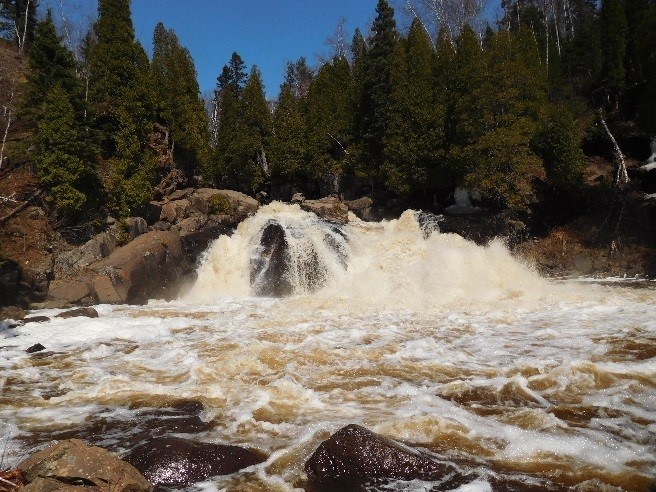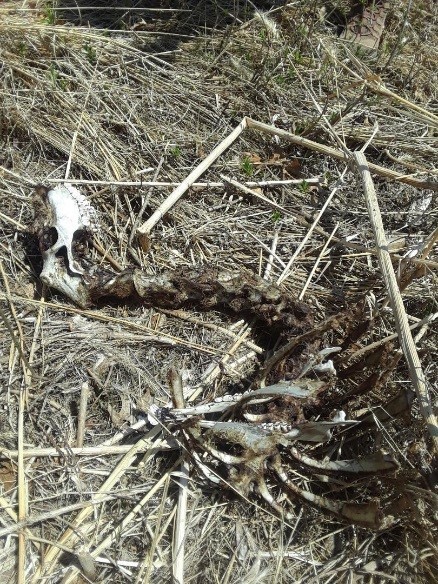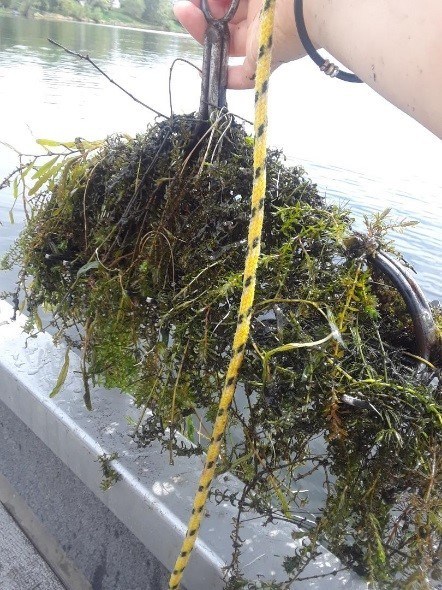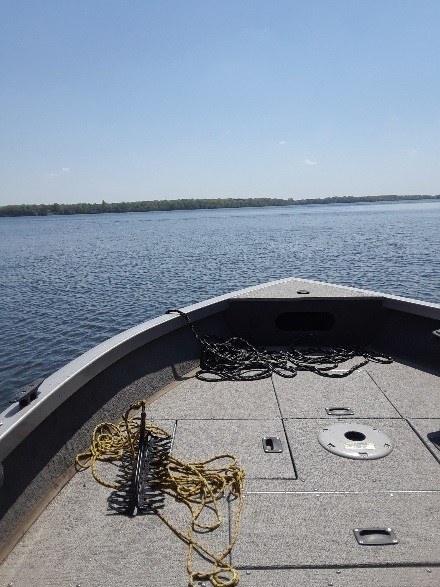The Ones Who Go Outside

By: Caroline Fazzio
While swinging by the grocery store after work one day, a lady noticed my Conservation Corps shirt and stopped me briefly.
“My daughter would run the other way if she saw your shirt,” she laughed, “She tried the Corps, but didn’t realize how much she’d have to be outside with the bugs and everything. ‘Never again, Mom’ she told me.”
I chuckled along with the woman before we went our separate ways, imagining the shock of joining a Corps crew if you weren’t “outdoorsy.” Most CCMI positions require some kind of outdoor spirit as they spend a majority of their time outside. As someone who recharges with a healthy dose of outdoors, I’d started getting stir-crazy sitting in the office all day. I was therefore duly excited when May swept in with plenty of opportunities to get outside and get dirty (or wet).
The month started with a blast of the North Shore as the IPs traveled to Tettegouche State Park for three days of camping, hiking, and questionable wild rice burgers. Nestled in the rolling hills of Lake Superior’s northern shore, Tettegouche offered a great place for reuniting and unwinding, as well as hiking 14 miles in one day and successfully not dying while scrambling down a muddy gorge (I promise it was part of the trail!).


After Tettegouche, the streak of outdoor trips continued with a trail camera installation adventure—an adventure that included discovering a mysterious cabbage-like plant (turned out to be skunk cabbage), investigating a deer carcass, and tracking deer paths through the prairie.
After trail cameras came boats and aquatics as I joined fellow Aquatic Invasive Species (AIS) specialists conducting AIS surveys. These surveys primarily involve sampling for aquatic vegetation densities. Basically this means we throw a rake in the lake and see what we pull up. Common finds include coontail, Canadian elodea, northern watermilfoil, and pondweeds—all native species; and curly-leaf pondweed and Eurasian watermilfoil—two invasive species. Both of these invasives have similar MOs—grow voraciously, outcompete and displace native species, interfere with water recreation, litter the shoreline, and just be general nuisances. At this time of year, you’re more likely to find curly-leaf pondweed, as it pops up quickly post-winter. Later in the summer, curly-leaf will die back and Eurasian watermilfoil will take the stage. It almost seems like they planned it out that way in some calculated scheme. Or perhaps (probably more likely) it’s just a reflection of ecology and the capacity of species to occupy specific niches. Either way, knowing where these various species exist helps inform management decisions, and offers a great chance to get out on the water.
Looking back on the month and all the opportunities I got to go out-of-doors, I’m both happy and confident to assuage all doubts that we, CCMI members, are indeed the ones who go outside.


